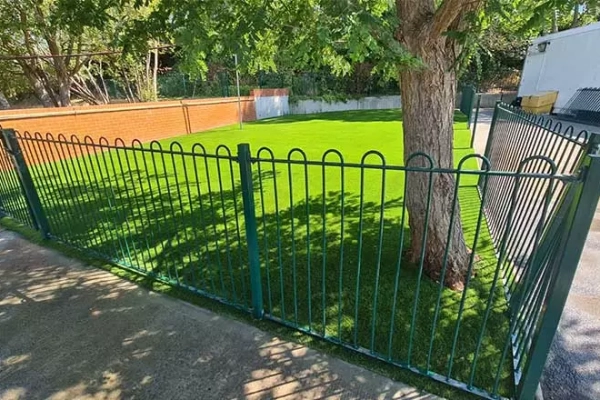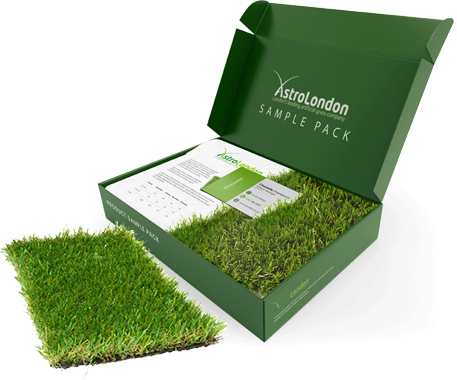Can Artificial Turf be installed over Real Grass?
7-MINUTE READ
If you’re thinking about swapping your high-maintenance lawn for a lush, evergreen one, artificial turf is probably already on your radar — and for good reason.
With the cost of installing artificial grass becoming more accessible, and the market expected to hit $7 billion by 2027, it’s clear that more homeowners and businesses are ready to ditch the mower and embrace a smarter solution.
Just a few days ago, while digging through Quora and other platforms for research, I noticed one question popping up again and again: Can artificial turf be installed over real grass?
As someone with over 12 years of hands-on experience in the turf industry, I have a slightly different — and very practical — point of view on this.
In this article, I’ll walk you through both sides of the story, share expert advice, and highlight potential pitfalls (like artificial turf drainage problems).

Estimate Quote
Fill in your details and get a price now
So... Can You Install Artificial Turf Over Real Grass?
The short answer?
Technically, yes — you can lay artificial grass on natural grass.
But if you’re aiming for a beautiful, long-lasting result, it’s usually not the way to go.
Here’s why,
When you attempt to lay synthetic grass over real grass, the living matter underneath doesn’t just stay neatly in place. It eventually decomposes, leading to a bumpy, uneven surface.
Worse yet, poor base preparation can cause serious artificial turf drainage problems, leaving you with puddles and a sagging, messy lawn.

Definitely not the look you’re after.
If you’re thinking short-term, like a quick setup for a party or event, installing artificial turf over grass could work as a temporary fix. In those cases, quick artificial grass installation methods might make sense because you don’t need to invest in a full dig-out.
But for a permanent, professional-looking lawn?
I strongly recommend preparing the ground for artificial turf properly. Without the right base preparation for artificial grass, you’re setting yourself up for headaches (and extra costs) down the road.
According to the Synthetic Turf Council, when done correctly, professional turf installations can look incredible and last between 15 to 20 years.
However, shortcuts — like skipping the removal of your existing lawn — can cut that lifespan in half, leading to major long-term issues with turf over grass.
Why Experts Recommend Removing the Grass First
When it comes to installing artificial turf, professional installers always stress the importance of removing grass before turf installation. Here’s why:
Creating a Stable, Long-Lasting Base
During installation, we always remove the organic layer of grass and roots from our client’s space. Without this, the ground will eventually shift and sink as the natural materials break down. This can lead to an uneven surface, undermining the longevity and appearance of your new lawn.
Ensuring Proper Drainage and Surface Grading
Artificial grass over an existing lawn can trap moisture, causing soggy patches that may lead to mold or mildew. Removing the grass ensures proper surface grading and prevents drainage issues, helping your turf stay dry and clean.
Preventing Future Maintenance Headaches
A solid, well-prepared base reduces the risk of common problems like weeds, bumps, and drainage issues — all of which can lead to expensive repairs down the line.
Industry surveys report that poor base preparation is responsible for over 70% of turf installation failures.
Artificial Turf Installation Process Followed by AstroLondon Experts
If you’re looking for your artificial turf to last longer, following the correct installation process is absolutely essential.
Personally, I would suggest that if you don’t have experience with turf installation, it’s highly recommended to hire a professional. Doing it yourself may result in an uneven surface, poor drainage, and a lawn that doesn’t last as long as it should.
AstroLondon’s experts follow a meticulous process to ensure your lawn stays beautiful for years to come.
Here’s the expert-approved process:
Remove Grass and Roots
The first step in preparing the ground for artificial turf is to remove all existing grass, roots, and organic material. We use a sod cutter or excavator to ensure the area is clear.
This is key for avoiding future issues where the turf could settle unevenly or experience unwanted growth underneath.
Our experts prefer to remove about 2-3 inches of soil to create enough space for the base layers and help the turf settle in smoothly.
Create a Stable Base
The next step is base preparation for artificial grass. AstroLondon professionals compact the soil, then add a layer of crushed gravel (3-4 inches) or decomposed granite, followed by a fine layer of sand. Everything is compacted thoroughly to create a smooth, stable base that won’t shift.
A properly compacted base can withstand up to 10 tons of pressure per square foot, which prevents the turf from sagging or shifting over time. It’s the key to ensuring your turf remains intact and resilient.
Add a Weed Barrier
To prevent weeds from sprouting up beneath your new turf, the Astro team lays down a geotextile fabric or weed barrier. This step is crucial for preventing artificial turf drainage problems and ensuring that your turf installation remains smooth and hassle-free for years to come.
Lay and Secure Artificial Turf
Next, the best way to install artificial grass is to carefully roll out the turf over the prepared area. Experts trim the edges to fit, then secure them with nails, staples, or adhesive to ensure everything stays in place.
For the most secure fit, professionals place turf nails about 4-6 inches apart around the perimeter. This provides the strongest hold, preventing the turf from lifting or shifting.
Apply Infill and Ensure Drainage
To keep the blades of your artificial grass standing upright and looking natural, experts apply silica sand or rubber infill. Infill helps with drainage, so you don’t run into any artificial turf drainage problems down the road.
For areas with pets, using antimicrobial infill can help reduce odors and prevent bacterial growth, ensuring a fresher lawn.
Request a FREE Survey and Quote
Key Takeaway
So, can you lay artificial grass on natural grass?
Of course you can!
But would I suggest this?
Absolutely No!
If you’re looking for a lawn that’s not only beautiful but also built to last, it’s definitely not the way to go.
Proper base preparation for artificial grass, like removing the existing grass, is a game-changer. It helps you avoid those annoying artificial turf drainage problems and prevents costly repairs down the road.
While the idea of using quick artificial grass installation methods might seem tempting, taking the time to do it right from the start ensures you get a lawn that’s both durable and low-maintenance.
If you’re serious about making the most of your investment and minimizing the cost of installing artificial grass in the long run, follow the expert practices — or better yet, leave it to the pros!
After all, your dream lawn deserves the best care.
Still unsure?
If you want expert guidance to understand which grass is better for your garden, reach out to us at @astroLondon.com.
We’re here to help you create a space that’s beautiful, practical, and perfectly suited to your needs.













